Byte ordering and bit numbering in Keccak and SHA-3 posted April 2017
As I talked about in a previous blogpost, Keccak and SHA3-3 are different in their bit convention, which gave birth to quite an overly complicated specification. The lack of good explanations in both the reference implementations and the reference documents led me to write this blogpost.
Padding
Before going further, let me briefly re-explain the multi-rate padding also called pad10*1:
- take the input and append the delimiter (
01for SHA-3) - append a
1to start the padding - append enough
0s followed by a final1so that the resulting output is a multiple of the rate
Here is a graphical example with input 0x9c = 1001 1100 and where the rate of our permutation is only 3 bytes:
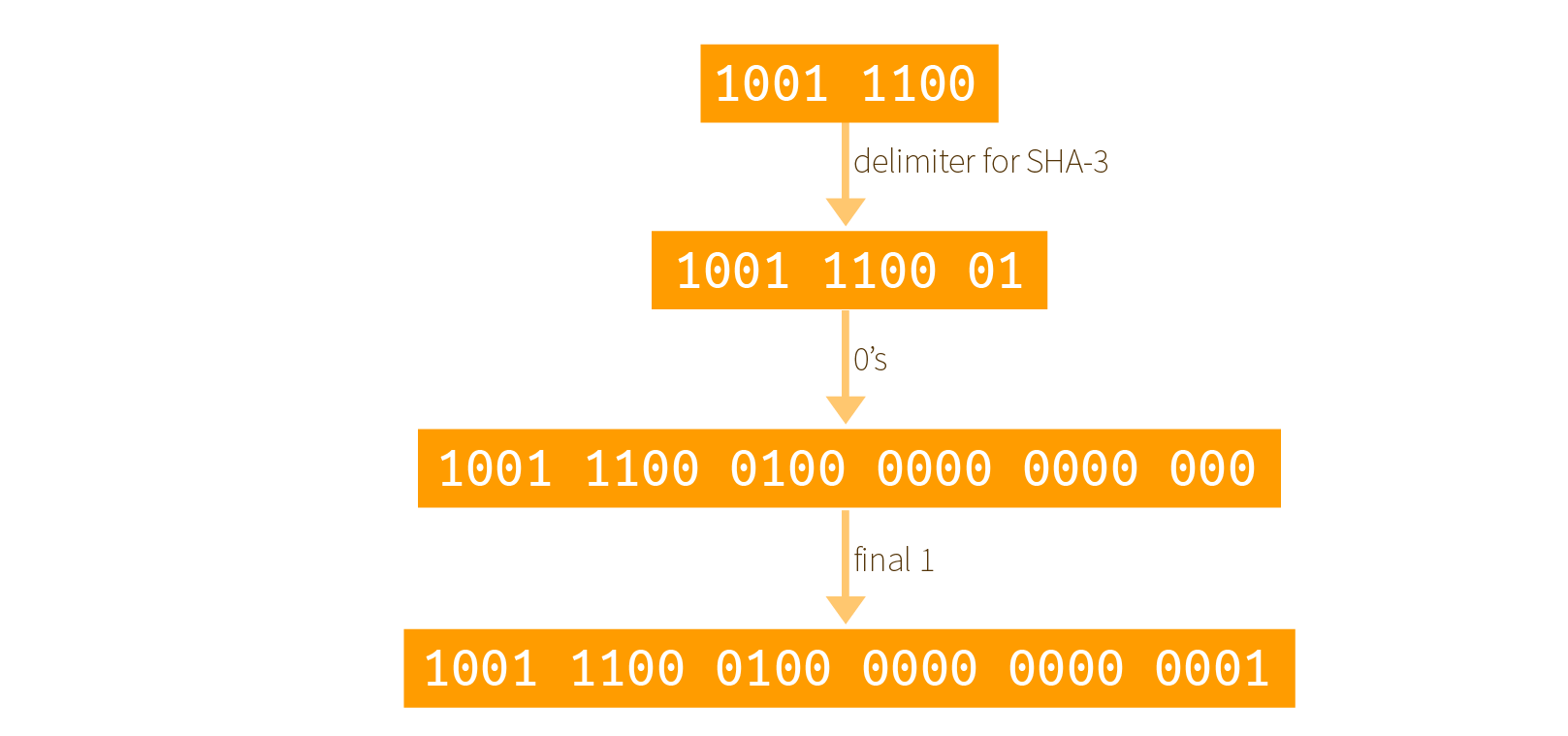
note that I forgot to add a
1after the delimiter and before all the0s(thanks Rachel)
Now, I'll just acknowledge that most implementations, and even the specification, talk about using 0x80 for the final bit. This blogpost should answer why.
Theoretical bit numbering
Keccak is specified in term of bits, but is discreetly aware of byte arrays as well. This is important as the rounds of Keccak require us to XOR parts of the input with lanes of the state. These lanes can be represented as uint64 types for keccak-f[1600], which we'll be looking at in this blogpost.
It could be hard to understand what is really going on in FIPS 202, but a look at an older version of the specification shows that Keccak interprets byte arrays in big-endian, but with an LSB bit numbering.
If you look at the Appendix B.1 of FIPS 202. You can see that before an input can be interpreted by SHA-3, it needs to go through some transformations.
Here is our own example of how it works with an input of 0xaebcdf. First the bits are re-mapped, then a padding is added, finally it is split into as many lanes as possible (here we have two 16-bit lanes):
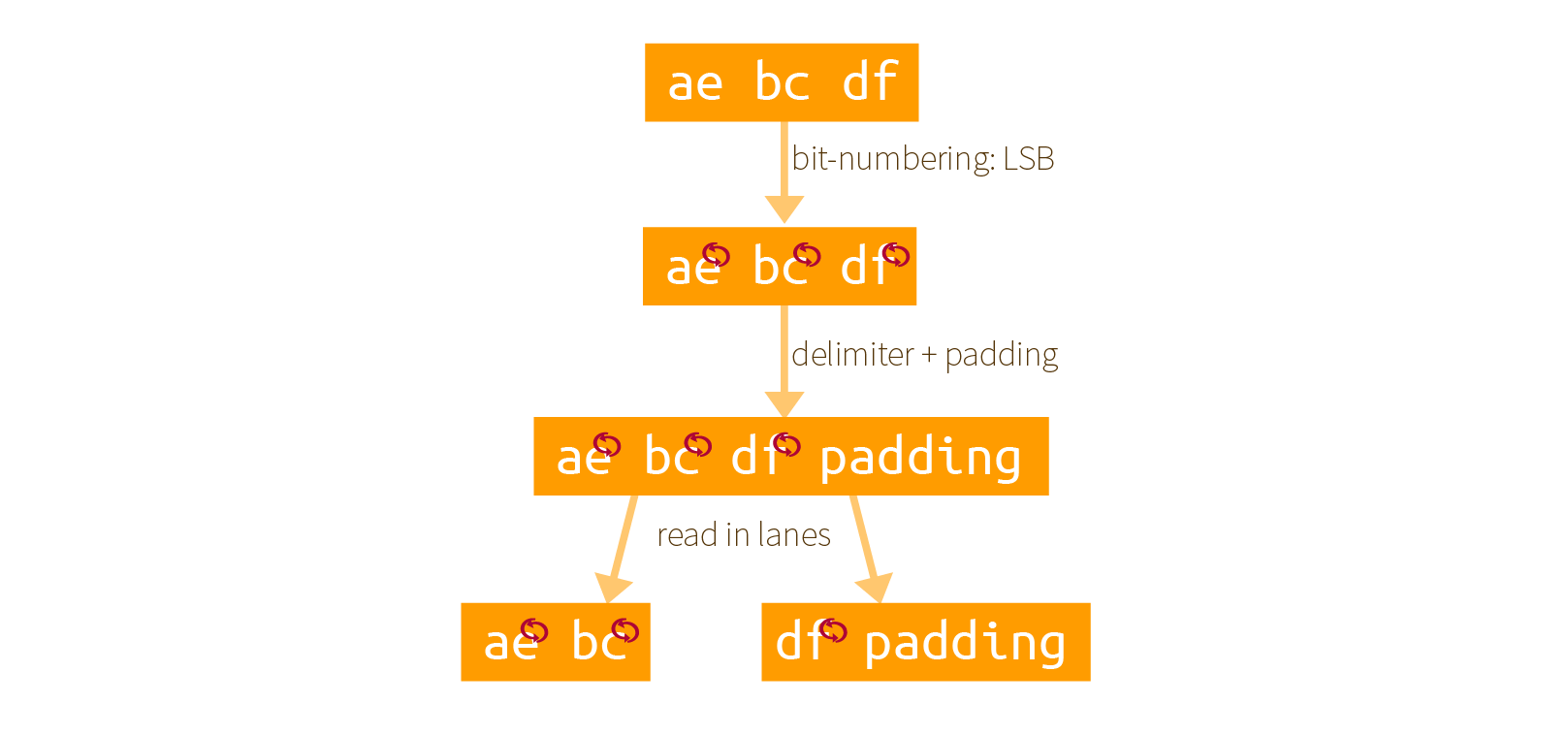
The same examples with bits:
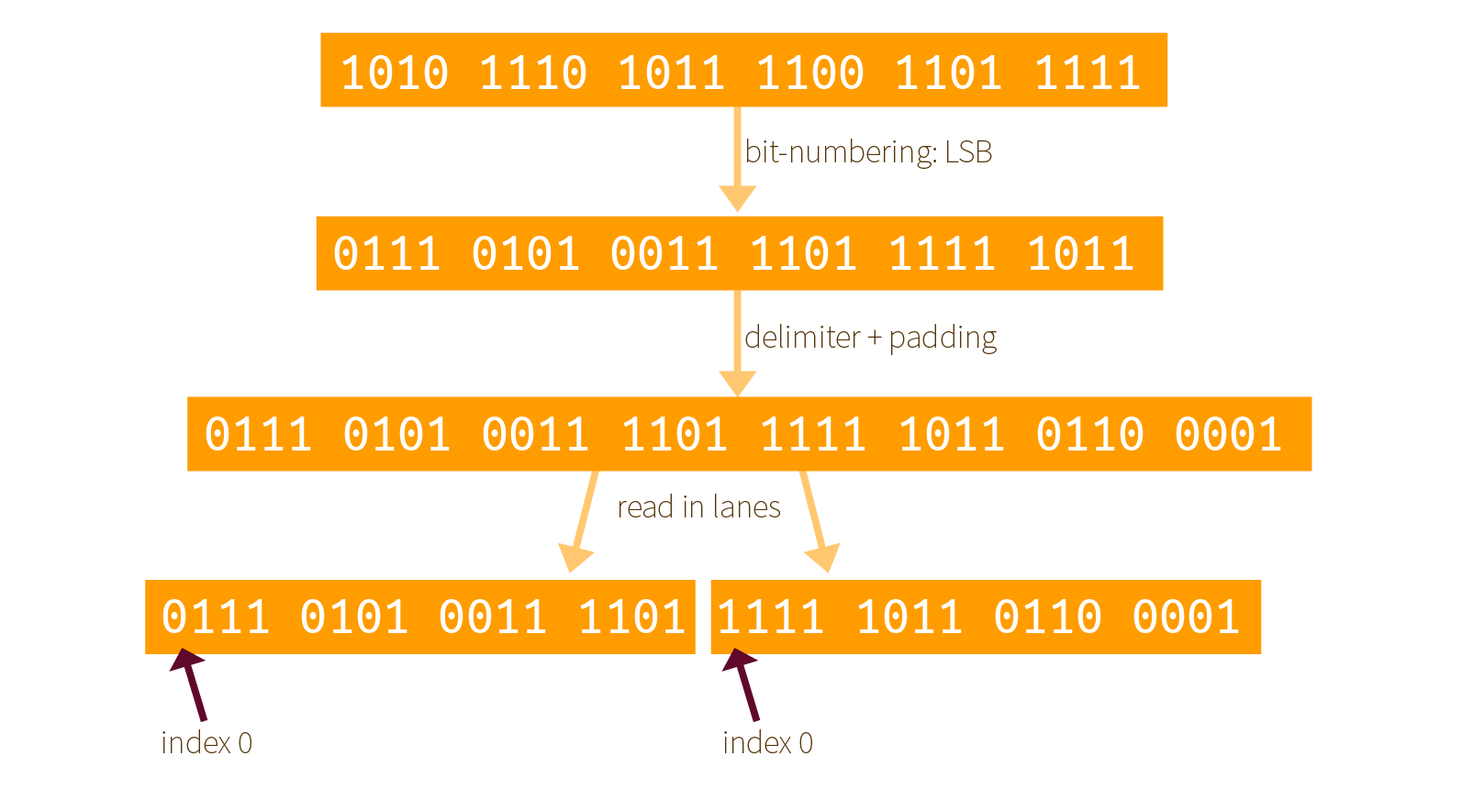
Two things that you must understand here:
- the padding is applied after re-mapping the bits, not before! Since the padding is already defined for Keccak's internal ordering of its bits.
- all of this is done so that a bit string is indexed as LSB first, not MSB first. It's weird but Keccak did it this way.
Why is the indexing of a bitstring so important?
Because we later apply the permutation function on the state, and some of the operations need to know what are the indexes of each bits. More on that later.
How to implement the re-mapping
It must be annoying to reverse all these bits right? What about not doing it? Well brace yourself, there is indeed a clever trick that would allow you to avoid doing this. And this trick is what is used in most of SHA-3's implementations. Here is a graphical explanation of what they do:
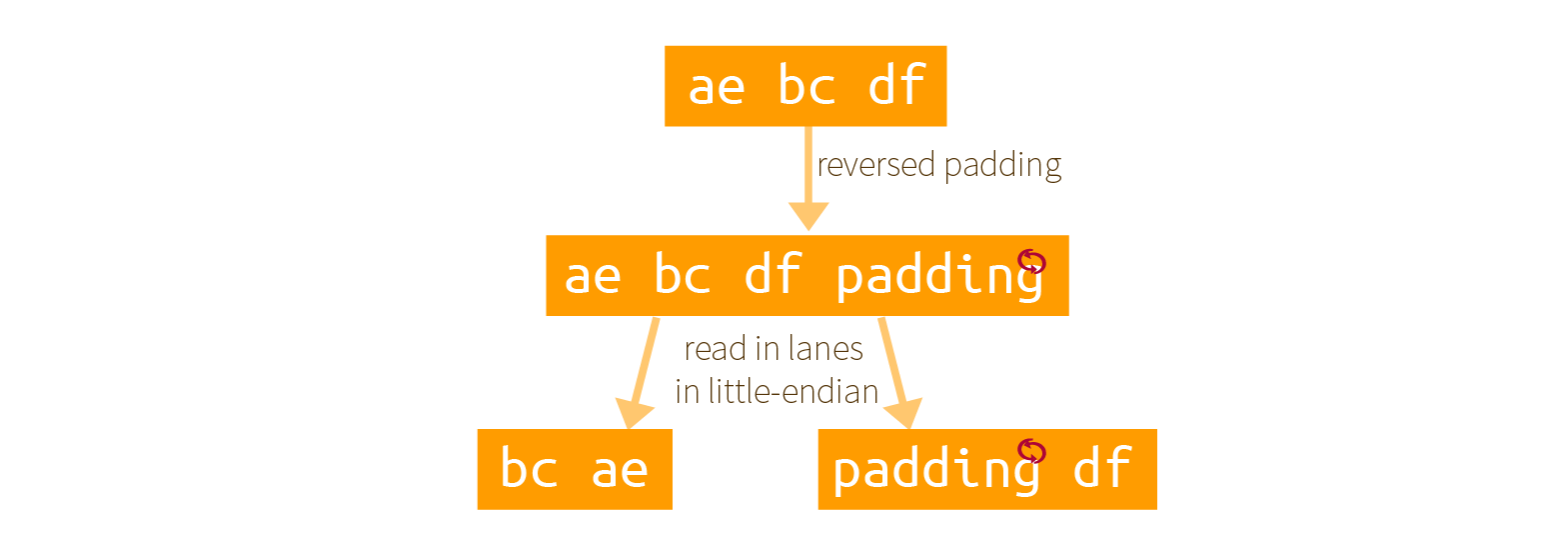
By reading the byte array as little-endian, and using an already reversed delimiter + padding, some magic happens!
The result is exactly the same but in reverse order.
If you aren't convinced look at the following diagram (which shows the same thing with bits) and look at the previous section result. Same, but the bitstream is readable in the reversed direction.
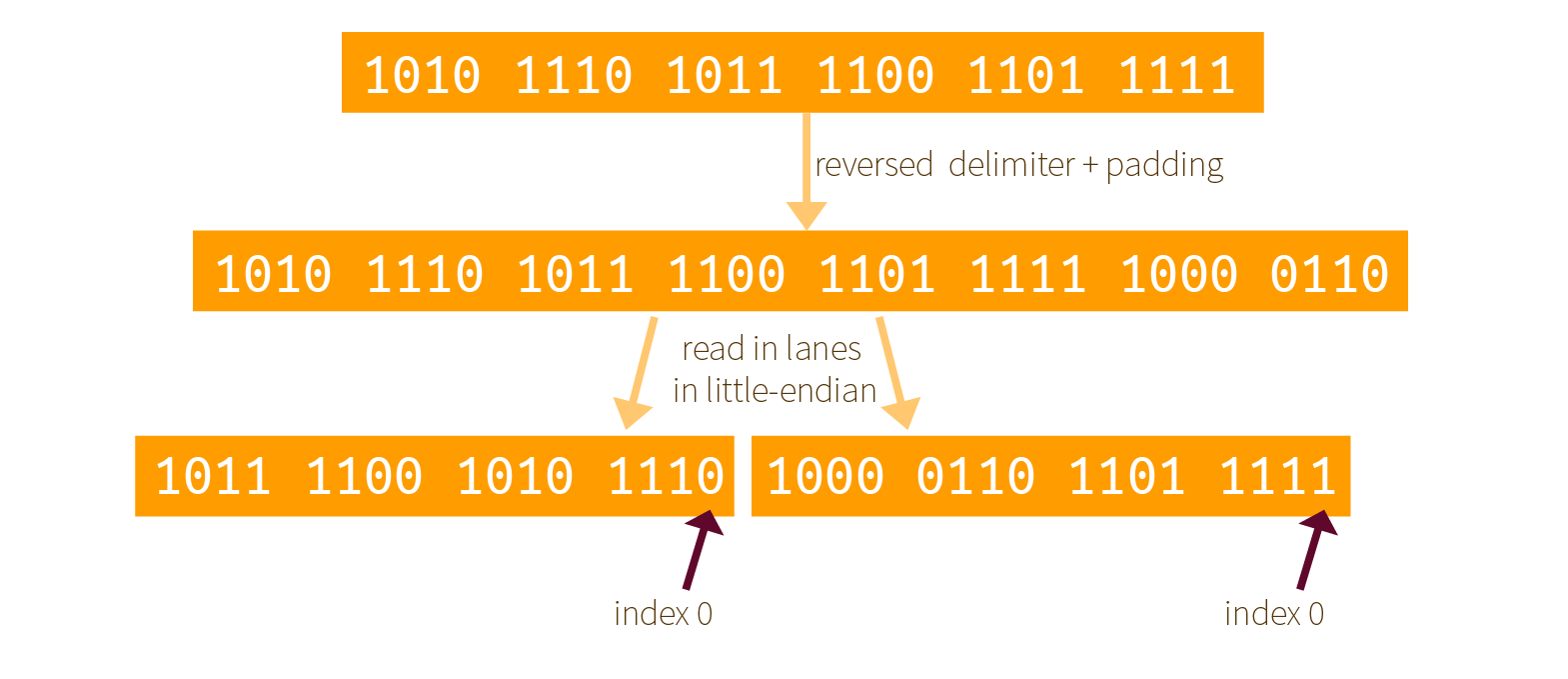
This means that now the index 0 of Keccak's internal ordering is on the right, not on the left. How will it influence the round functions that apply on our lanes?
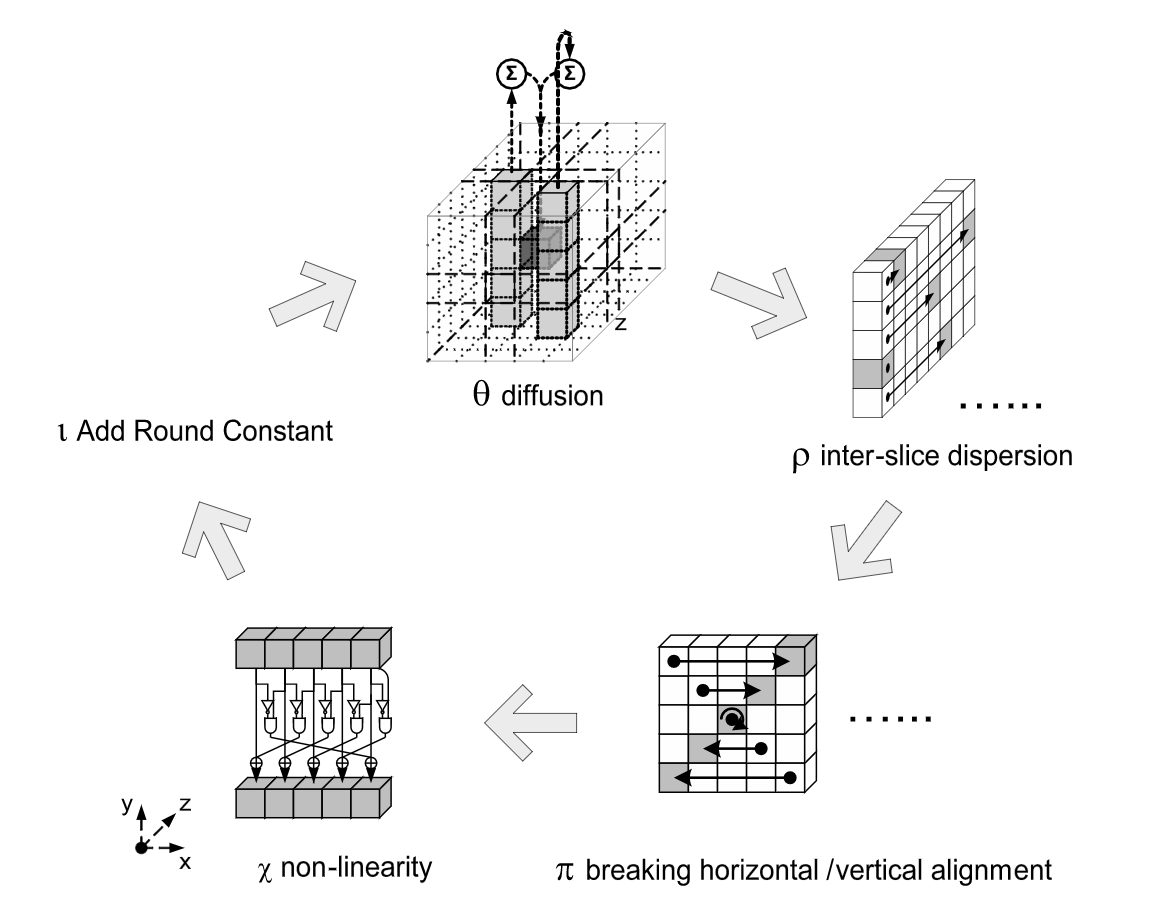
It turns out that a lot of operations are unchanged. Who would have known that XORs, ANDs and NOTs operations were not affected by the order of the bits! but only some rotations and bit positioning are. If you look at the reference implementations you will see that indeed, rotations have been reversed (compared to what the reference tells you to do).
And this is how a clever implementation trick made its way in a specification with no real explanation.
You're welcome!


Comments
daniel
in the keccak reference, it says only the last byte (<8 bit) needs to reverse, why?
david
not sure what part of the spec you're talking about
Mark
> ... operations were not affected by the order of the bits! but only some rotations and bit positioning are.
Could you include the affected operations in your post, please? That would be very helpful!
Rachel
Great explanation! Thanks!
You have a tiny error - in the first scheme you didn't specify step 2 of adding the first 1 bit of the start of padding.
david
good catch Rachel!
Dev
Going by the steps mentioned in the link below, it seems like the pad is appended first and the bit reversal happens after that. Could you please clarify?
https://csrc.nist.gov/CSRC/media/Projects/Cryptographic-Standards-and-Guidelines/documents/examples/SHA3-224_Msg5.pdf
aa
How the computer stores data as bits is doesn't matter since the smallest addresable data is *always* byte. Only from there starts the difference between big/little-endian.
Anything written by human / on paper is always big-endian.
Your example number, 0xaebcdf will be stored *differently* between Intel (df,bc,ae,00) and ARM(00,ae,bc,df) which of course will be wrong since there's no 3 bytes data type in any known computer, what you mean possibly was ARM(ae,bc,df,00) which is (00,df,bc,ae) in intel or 0xaebcdf00 in human term. that's why chunking data in block is important.
DudEski
Nice example, but with little mistake in the middle, as you mentioned that SHA-3 suffix is a 0x80 (1000 0000), but actually it is 0x86 (1000 0110) according to FIPS202 which you already use in the graphical interpretation as "padding" value (1000 0110)
Dimon
thx, we 10 hours make our implementation and dont understand whats wrong with padding
leave a comment...